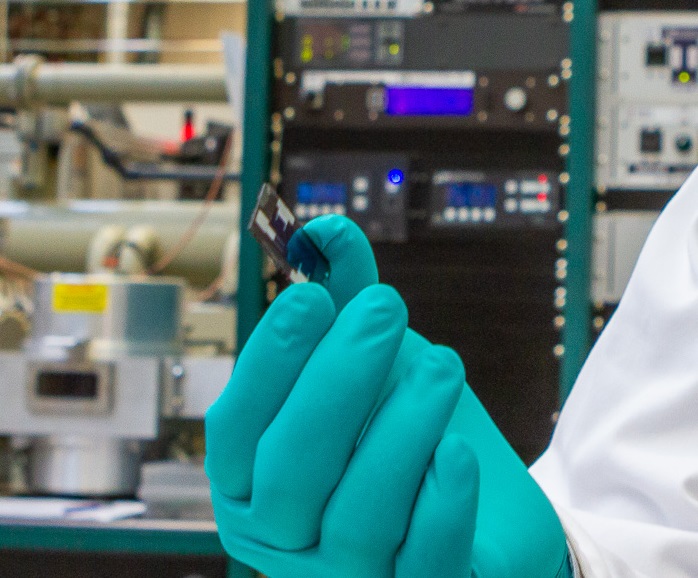European Solliance Solar Research (Solliance), a consortium based in the Netherlands, said last week that researchers from three of its partners – the Netherlands Organisation for Applied Scientific Research (TNO), EnergyVille, and the Eindhoven University of Technology – have achieved a 29.2% power conversion efficiency on a transparent bifacial perovskite solar cell combined with a crystalline silicon solar cell in a four-terminal tandem configuration.
In April, the consortium achieved a 28.7% record efficiency for the device, but the new results mark a significant improvement. “This was made possible by further increasing the wide-bandgap of the perovskite cells with high near-infrared transparency,” Gianluca Coletti, TNO's program manager for tandem PV technology, told pv magazine.
Solliance said the perovskite cell has reached a stabilized efficiency of 17.8% during five-minute, maximum-power-point tracking. “In combination with the Panasonic silicon bottom cell, a new world-record 4T perovskite/Si tandem efficiency of 29.2% is realized,” it said, noting that the efficiency rating refers exclusively to the front side of the cell.
The cell is based on a highly near-infrared transparent perovskite cell built by TNO, EnergyVille, and an 11.4%-efficient c-Si interdigitated back contact (IBC) silicon heterojunction (SHJ) cell developed by Japanese electronics manufacturer Panasonic.
In a recent paper, the research team explained that the cell was used in 24.5 mW/cm2 bifacial tandem mini-modules with an area of 100 cm2 in combination with a PERC bottom cell. The panels exhibited a 3 mW/cm2 gain compared to the same device with a monofacial architecture. According to the scientists, outdoor results have shown that the module can outperform the monofacial counterpart by more than 25% in a 10% albedo environment.
“The record 4T tandem device and the scaled up tandem modules can be used for the utility scale and commercial rooftop market segments thanks to the opportunity for bifacial installations,” Coletti said.
The research team combined the transparent perovskite cell with a flexible copper indium gallium selenide (CIGS) tandem solar cell built by MiaSolé Hi-Tech, a U.S. unit of Chinese thin-film specialist Hanergy. The efficiency rating was 27.1%, up slightly from 27.0% in April.
This content is protected by copyright and may not be reused. If you want to cooperate with us and would like to reuse some of our content, please contact: editors@pv-magazine.com.




4 comments
By submitting this form you agree to pv magazine using your data for the purposes of publishing your comment.
Your personal data will only be disclosed or otherwise transmitted to third parties for the purposes of spam filtering or if this is necessary for technical maintenance of the website. Any other transfer to third parties will not take place unless this is justified on the basis of applicable data protection regulations or if pv magazine is legally obliged to do so.
You may revoke this consent at any time with effect for the future, in which case your personal data will be deleted immediately. Otherwise, your data will be deleted if pv magazine has processed your request or the purpose of data storage is fulfilled.
Further information on data privacy can be found in our Data Protection Policy.